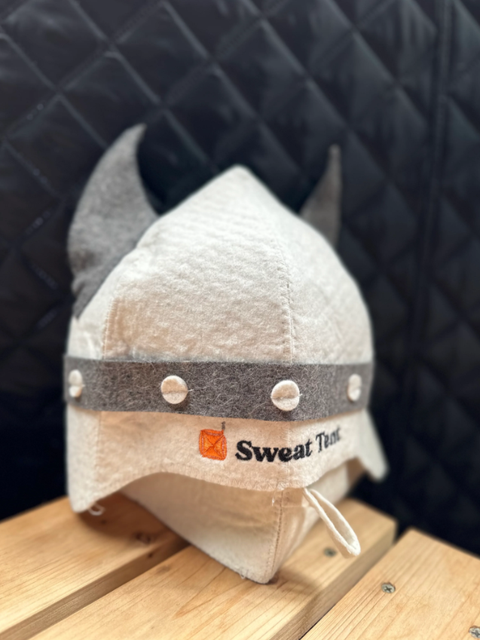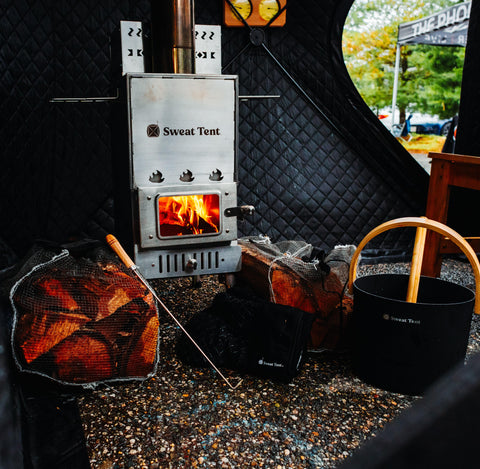The sauna, a place often associated with relaxation, can be a pivotal part of your post-workout routine. It can aid in easing muscle soreness, burning extra calories, and even accelerating your overall recovery process. But the question that often lingers is, how long should you stay in the sauna after a workout to reap the benefits?
Let's dive into the various factors to consider when determining how long to stay in the sauna after a workout, along with exploring the various health benefits and considerations of hitting the sauna post-workout.
Here’s How Long to Sit in the Sauna After a Workout
While the time can vary depending on individual preferences and conditions, a range of 10 to 30 minutes is commonly recommended.
Studies and experts, including Dr. Rhonda Patrick, has highlighted that 20 minutes at 79°C (174°F) is the optimal time frame and temperature to unlock general health and cardiovascular benefits. As a heat-adapted individual, Dr. Patrick’s personal post-exercise sauna protocol after a session is 20-30 minutes at about 186°F and between 10-20 percent humidity—a protocol she worked up to over time.
While duration is certainly a significant factor, there are other equally crucial considerations that can shape your sauna experience, including personal heat tolerance, workout intensity, and hydration levels.

Personal Heat Tolerance: Knowing Your Limits
Everyone's threshold for heat varies. If you're new to the sauna or sensitive to heat, it's essential to start with shorter durations, such as 10 minutes, and gradually build up as you acclimate. It's always best to prioritize comfort and safety, listening to your body's cues—especially right after a workout.
Workout Intensity & Hydration
Aside from personal heat tolerance and sauna experience, there are two other important factors to consider before stepping into the sauna after a workout: the intensity of your workout and your body's hydration levels.
Workout Intensity: After an especially grueling workout, your body might not be ready for prolonged exposure to high temperatures. You might need to adjust either the duration or the temperature to ensure you don't overexert yourself.
Hydration Levels: It's easy to underestimate how much fluid you lose during a sauna session. On average, a 15 to 20-minute sauna session can result in the loss of one pint of sweat. This is why it's imperative to rehydrate before, during, and after the session. Electrolyte supplements may be beneficial to ensure you are not losing essential vitamins and nutrients as you sweat it out.

Should You Cool Down Before Sauna?
The science is unclear about whether a cool-down period is necessary before entering the sauna. While some experts suggest waiting 10 minutes after exercising before entering the sauna to help your heart rate stabilize and your body cool down, other experts like Dr. Patrick waste no time after her HIIT sessions before jumping in, using the sauna as a tool to extend her aerobic workout.
The best course of action is always to listen to your own body. If you are gasping for air after an intense workout, or feeling lightheaded, give your heart rate a chance to come down, and your breathing to stabilize. Take a moment to drink some water and cool down before you jump into the sauna.

Post-Exercise Sauna Protocols for Specific Benefits
In addition to unlocking general health benefits, you can unlock specific recovery benefits with strategic sauna protocols completed at temperatures ranging between 80-100 ℃; 176-212℉, including:
Human Growth Hormone Release
For boosting human growth hormone release, essential for muscle development and recovery, the best post-exercise sauna protocol may surprise you. Rather than frequent use, it involves infrequent sessions, as rare as once a week.
Here's the optimal routine: Start with a 30-minute sauna session after exercise, followed by a five-minute cool-down. Repeat this pattern several hours later for a total of four sessions in one day. This can increase growth hormone release by up to 16-fold, extending hours after sauna use.
For maximum effect, enter the sauna in a semi-fasted state (no food 2-3 hours prior) and alternate sauna sessions with cold exposure like ice baths or cold showers. This specific combination of heat, cold, and timing enhances growth hormone release, making it an effective strategy for post-workout growth and recovery.

Heat Shock Protein Release
If your workout was primarily focused on building muscle or strength training, a post-exercise sauna session to release heat shock proteins—which are essential for muscle recovery and growth—may be particularly beneficial.
Heat shock proteins (HSPs) assist in repairing damaged muscle proteins, reducing inflammation, and making muscles more resilient to future stress. Sitting in a sauna creates heat stress that triggers the body to produce more HSPs.
In fact, a study found that healthy men and women who were exposed to a heat stress chamber at 163°F for 30 minutes increased their heat shock protein levels by 49 percent. This significant increase emphasizes the potential advantages of incorporating sauna sessions into post-workout routines for enhancing muscle recovery and overall fitness progress.
RELATED: How Long Should You Stay in the Sauna for Optimal Benefits?

Other Benefits of Post-Exercise Sauna Bathing
Engaging in sauna bathing post-workout offers a myriad of health benefits, each contributing to different aspects of wellness and fitness.
- Boost Muscle Recovery: The sauna's heat relaxes muscle tension, boosts blood flow, and supports muscle recovery. The heat therapy from the sauna also activates endorphins (up to three times their normal amounts in some cases!), helping ease muscle soreness, and promote feelings of happiness and wellbeing.
- Improve Cardiovascular Endurance & Performance: Regular post-exercise sauna use can increase cardiovascular endurance and enhance overall exercise performance. It's also shown to have a synergistic effect with aerobic exercise in lowering mortality related to heart diseases.
- Burn Extra Calories: Sauna bathing mimics low-grade cardio exercise, assisting in calorie burn. If you’re looking for a relaxing way to torch some extra calories, sauna is it!
- Promote Better Sleep: Engaging in sauna bathing can assist in initiating and maintaining sleep by activating the body's cooling down response and melatonin secretion, making it easier to achieve deep, restorative sleep.
- Reduce Risk of Death by All Causes: Regular sauna use combined with consistent aerobic exercise has been proven to reduce overall mortality rates and heart-related deaths.
Enhance Performance & Cardiorespiratory Fitness: Studies have shown that post-exercise sauna bathing enhances heat tolerance during exercise and improves performance markers, making it a practical addition to an athlete's routine.
Conclusion
Understanding how long to stay in the sauna after a workout can optimize your fitness journey. Whether you're seeking muscle recovery or cardiovascular health, the sauna is a valuable tool.
Now that you know how long to stay in a sauna for your health goals, make it part of your fitness and recovery routine with Sweat Tent's wood-fired home sauna tent and sauna accessories. Experience ancient sauna therapy without the hefty price tag or setup hassle. With zero electricity required and quick setup, you'll enjoy all the benefits in no time.
See Sweat Tent in action on Instagram or share your experiences using the hashtag #sweattent.
Medical disclaimer: This post is intended for informational purposes only and is not a substitute for professional medical advice. Please consult with your doctor before adding sauna bathing to your health and wellness routine. Individuals with certain heart conditions or other medical concerns should consult with their healthcare provider before incorporating sauna use into their health and wellness regimen.






